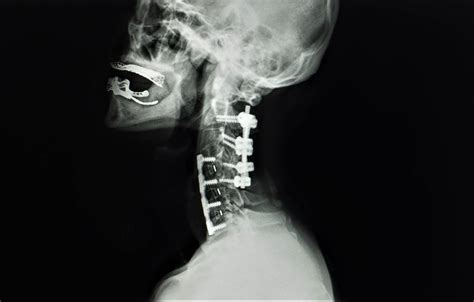Cervical fusion surgery is a complex and highly specialized medical procedure designed to alleviate severe pain, numbness, and weakness in the neck and arms, often caused by degenerative disc disease, spinal stenosis, or other conditions affecting the cervical spine. This surgical intervention involves the fusion of two or more cervical vertebrae, which can help stabilize the spine, reduce pain, and improve mobility.
At the heart of cervical fusion surgery is the goal of eliminating or significantly reducing the movement between the affected vertebrae. By doing so, the procedure aims to prevent further irritation or compression of the spinal cord and the nerve roots that branch out from it. This compression can lead to a variety of symptoms, including pain that radiates down the arm, numbness or tingling in the hands or fingers, weakness in the arms or legs, and in severe cases, difficulties with balance and coordination.
Preparing for Cervical Fusion Surgery
Preparation for cervical fusion surgery typically begins several weeks before the actual procedure. Patients are advised to cease smoking, as smoking can impede the healing process and reduce the chances of a successful fusion. Similarly, cessation of non-steroidal anti-inflammatory drugs (NSAIDs) and certain other medications may be recommended, as these can interfere with the bone fusion process.
Additionally, patients may undergo a series of diagnostic tests, including X-rays, computed tomography (CT) scans, and magnetic resonance imaging (MRI), to provide a detailed view of the cervical spine and identify the exact location and extent of the damage or degeneration. These tests are crucial for determining the best approach for the surgery.
The Surgical Procedure
Cervical fusion surgery can be performed through various techniques, including anterior (front) and posterior (back) approaches, or a combination of both, depending on the specific condition being treated and the surgeon’s preference. The anterior approach involves making an incision in the front of the neck to access the cervical spine, while the posterior approach involves an incision in the back of the neck.
Once the incision is made and the affected vertebrae are exposed, the surgeon will typically:
- Remove the Disc: The damaged or degenerative disc is carefully removed to prevent further irritation of the nerve roots.
- Prepare the Vertebrae: The endplates of the adjacent vertebrae are prepared to receive the bone graft.
- Insert the Bone Graft: A bone graft, which can be taken from the patient’s body (autograft) or from a donor (allograft), is inserted between the prepared vertebrae. The bone graft serves as a bridge, allowing the vertebrae to grow together over time.
- Stabilize with Hardware: To provide immediate stability and facilitate the fusion process, the surgeon may use hardware such as plates, screws, and rods.
Recovery and Rehabilitation
The recovery period for cervical fusion surgery can vary significantly among patients, depending on factors such as the extent of the surgery, the overall health of the patient, and adherence to post-operative instructions. Generally, patients are advised to avoid heavy lifting, bending, and strenuous activities for several weeks to allow the fusion to start taking hold.
Physical therapy often plays a critical role in the recovery process, helping patients to regain strength and mobility in their neck and arms. A balanced rehabilitation program can include exercises tailored to improve range of motion, strengthen the muscles of the neck and shoulder, and enhance overall posture.
Complications and Risks
While cervical fusion surgery can offer significant relief from symptoms associated with cervical spine disorders, it is not without potential risks and complications. These can include infection, bleeding, reactions to anesthesia, injury to the spinal cord or nerve roots, and in some cases, failure of the fusion to occur (nonunion).
It’s also important for patients to be aware of the potential for adjacent segment disease, where the vertebrae adjacent to the fusion site may undergo accelerated degeneration due to the altered biomechanics of the spine.
Conclusion
Cervical fusion surgery is a valuable treatment option for individuals suffering from severe and debilitating conditions affecting the cervical spine. By understanding the procedure, its potential benefits, and the associated risks, patients can make informed decisions about their care. As with any surgical intervention, a thorough discussion with a healthcare provider is essential to determine if cervical fusion surgery is the right course of treatment for specific conditions and symptoms.
What is the primary goal of cervical fusion surgery?
+The primary goal of cervical fusion surgery is to stabilize the cervical spine, reduce pain, and improve mobility by fusing two or more vertebrae together, thereby eliminating or significantly reducing the movement between them.
What are the risks and complications associated with cervical fusion surgery?
+Risks and complications can include infection, bleeding, reactions to anesthesia, injury to the spinal cord or nerve roots, failure of the fusion to occur (nonunion), and adjacent segment disease.
How long does recovery typically take after cervical fusion surgery?
+Recovery times can vary, but generally, patients are advised to avoid heavy lifting, bending, and strenuous activities for several weeks. Full recovery, including regaining strength and mobility, can take several months, with some patients requiring up to a year or more for complete healing and recovery.



